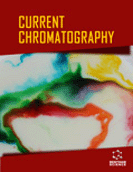Abstract
In conventional high-performance liquid chromatography, chiral separations are performed by chiral column with a chiral selector (CS) chemically bonded to the solid support. In contrast, high-speed counter-current chromatography (HSCCC) performs chiral separations by dissolving CS in the liquid stationary phase. During the past two decades, several CSs were developed to successfully carry out chiral HSCCC which include N-dodecanoyl-L-proline-3,5- dimethylanilide, β-cyclodextrin derivatives, vancomycin, cinchona alkaloid derivatives, cellulose and amylose derivatives, tartaric acid derivatives, etc. Compared to HPLC which uses over hundred different kinds of CSs, the number of CSs effectively used in HSCCC is limited to several compounds. This may be due to the violent molecular movement of CS dissolved in the liquid stationary phase which reduces chiral selectivity based on steric affinity. Future development strategy of CS for HSCCC proposed here is to suppress the molecular movement of the CS in the liquid stationary phase by the following three ways: 1) using viscous stationary phase such as aqueous-aqueous polymer phase system; 2) attaching a long hydrophobic chain to the asymmetric carbon, or 3) chemically bonding CS onto hydrophobic small particles such as carbon nanotubes, gold colloidal particles, and submicron silica particles.
Keywords: Chiral separation, high-speed counter-current chromatography, chiral selector, steric interaction.
 53
53

















